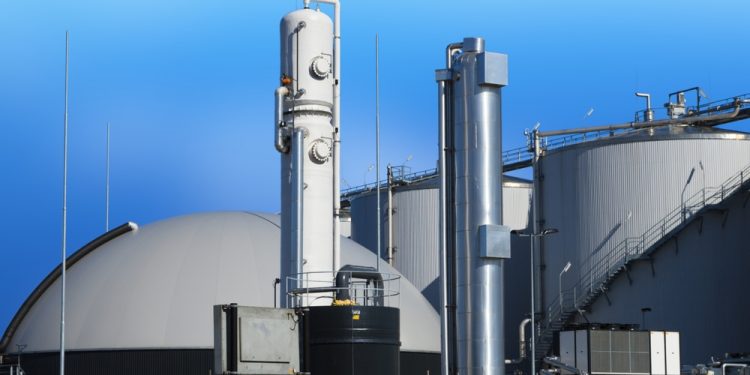In today’s energy landscape, there is no single silver bullet. The future will not be powered by just solar panels, wind farms, or pipelines – it will require everything: natural gas, wind, solar, hydro, nuclear, and yes, biogas.
Biogas often goes unnoticed, but it is a legitimate renewable energy source that serves two purposes: it generates clean energy and addresses our significant waste issue. It will not replace everything else, but it does not need to. Like every energy source currently in use, it plays a unique role – precisely what we need.
What Is Biogas, Exactly?
Biogas is a renewable fuel derived from organic waste – food scraps, manure, sewage, and agricultural leftovers. These materials decompose in an anaerobic (oxygen-free) environment, producing a gas primarily composed of:
- Methane (CH₄) – the same high-energy compound found in natural gas
- Carbon dioxide (CO₂)
- Small amounts of hydrogen sulfide, ammonia, and water vapor
This breakdown process, called anaerobic digestion, occurs in sealed tanks or pits known as digesters. The gas is captured, stored, and prepared for use. The remaining material becomes nutrient-rich fertilizer – closing the loop in a circular, waste-to-energy model.
Learn more about anaerobic digestion and biogas from the EPA’s AgSTAR program.
 Why Biogas Matters
Why Biogas Matters
Biogas won’t power entire countries by itself – but that’s not the point. It’s part of a bigger puzzle. It makes sense in areas where organic waste is abundant and where there’s a need for localized, reliable energy. And it’s not theoretical – it’s already being used around the world.
Where Biogas Fits In
Electricity Generation
Biogas can be used in gas engines or turbines to generate power. It’s especially beneficial for farms, wastewater treatment facilities, and food processors – anywhere with a consistent supply of organic waste and grid constraints.
Heat and Combined Heat & Power (CHP)
In CHP systems, biogas creates electricity and captures the waste heat for building heat or industrial processes – maximizing efficiency.
Upgraded to Biomethane
Raw biogas can be purified and upgraded to biomethane, a fuel nearly identical to natural gas. It can then enter the natural gas grid or be compressed into bio-CNG to power vehicles.
Rural Cooking and Household Use
In developing regions, small digesters transform manure or food waste into gas for stoves and lamps – providing clean cooking fuel, improving indoor air quality, and reducing deforestation.
Industrial Fuel
Industries also use biogas or biomethane for steam production or as a chemical feedstock – especially in food processing, manufacturing, and green chemical development.
The Broader Energy Picture
Here’s the bottom line: we need all energy sources working together. Each has strengths and limitations.
- Wind and solar are clean yet intermittent
- Natural gas is dependable and scalable but may be limited by infrastructure
- Hydropower is potent but geography-dependent
- Biogas is localized, renewable, and converts waste into value
None of these alone can carry the weight of global energy demand. Together? They can do a lot.
Bonus: Environmental and Economic Wins
Biogas doesn’t just provide energy – it solves real problems:
- Reduces landfill waste
- Lowers methane emissions from agriculture
- Cuts reliance on fossil fuels
- Produces natural fertilizer
- Supports circular economy models
- Creates local jobs and energy independence
And it’s not a future concept – it’s already working, quietly solving two problems at once: energy and waste.
Want to dig deeper into the benefits of biogas? Check out the American Biogas Council’s Why Biogas page.
A Role Player, Not a Replacement
Biogas isn’t here to push out solar or compete with wind – it complements them. It’s reliable where those sources aren’t, and it adds value where waste is plentiful. Like hydro, geothermal, and natural gas, it has its place.
Energy resilience isn’t about betting everything on one card – it’s about building a deck that works. And biogas is one of those cards.
Thinking About a Biogas or RNG Project?
Whether you’re a developer, dairy, food processor, municipality, or investor, biogas projects bring technical complexity and legal nuance. At Avisen Legal, we’ve supported more than 40 biogas and renewable natural gas (RNG) projects nationwide.
We can help you move your project from concept to compliance to long-term success – so you can focus on innovation, sustainability, and impact.






